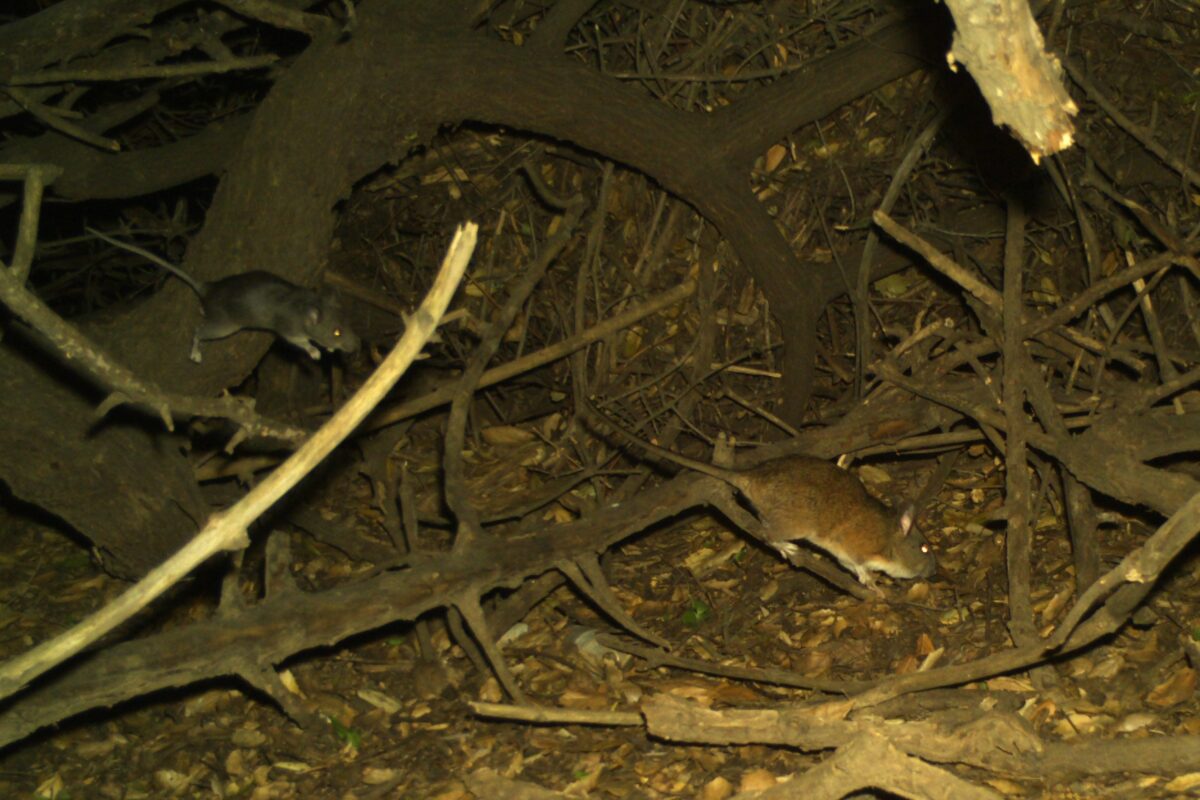
Conserving UCLA’s Big-Eared Woodrats
The big-eared woodrat (Neotoma macrotis) is a nocturnal rodent speciesnative to southern California. Closely related to the dusky-footed woodrat, thisspecies constructs large, elaborate middens, or nests, with dry vegetation, whichserve…
The big-eared woodrat (Neotoma macrotis) is a nocturnal rodent species
native to southern California. Closely related to the dusky-footed woodrat, this
species constructs large, elaborate middens, or nests, with dry vegetation, which
serve as their main form of habitat and protection. Though they are a key native
mammal species, their populations are often threated by ongoing urban
expansion, and it is imperative that UCLA prioritize their conservation to
maintain native species biodiversity on campus. The UCLA Sustainability Action
Research team, Conserving UCLA’s Big-Eared Woodrats, conducted a field
study and habitat analysis of the woodrat population at Sage Hill – the campus’s
last remaining area of primarily native vegetation – to assess the status of the
population and recommend future strategies for the species’s conservation.
Our overall goals were to estimate the current population size, find nest
distributions across different areas on campus, identify nest microhabitats, and
find where other potential woodrat habitats may be located across campus. By
utilizing past research and collecting new data through a transect-monitoring
strategy in the field, our team was able to gauge the population size while
mapping the locations and surrounding vegetation conditions of nests. We
visualized our findings using GIS mapping software and produced web apps
such as an ArcGIS Story Map to convey our results in an accessible manner to a
public audience. From our data, we calculated that there are approximately 54
woodrats in the population, and they have a notable preference for native
vegetation, specifically laurel sumac and coast live oak. Ultimately, we
concluded that protecting and prioritizing native plant species across campus,
continuing to monitor for woodrat nests, and educating UCLA’s community on
woodrats, are crucial to ensuring the conservation of big-eared woodrats on
UCLA’s campus.
Stakeholder: Andy Kleinhesselink, Managing Director of Sage Hill
Team Leaders: Travis Crane & Ria Erin Mehra
Team Members: Brian Booher, Avery Bourne, Lisa George, Gitanjali Sharma, Maya Thrasher
